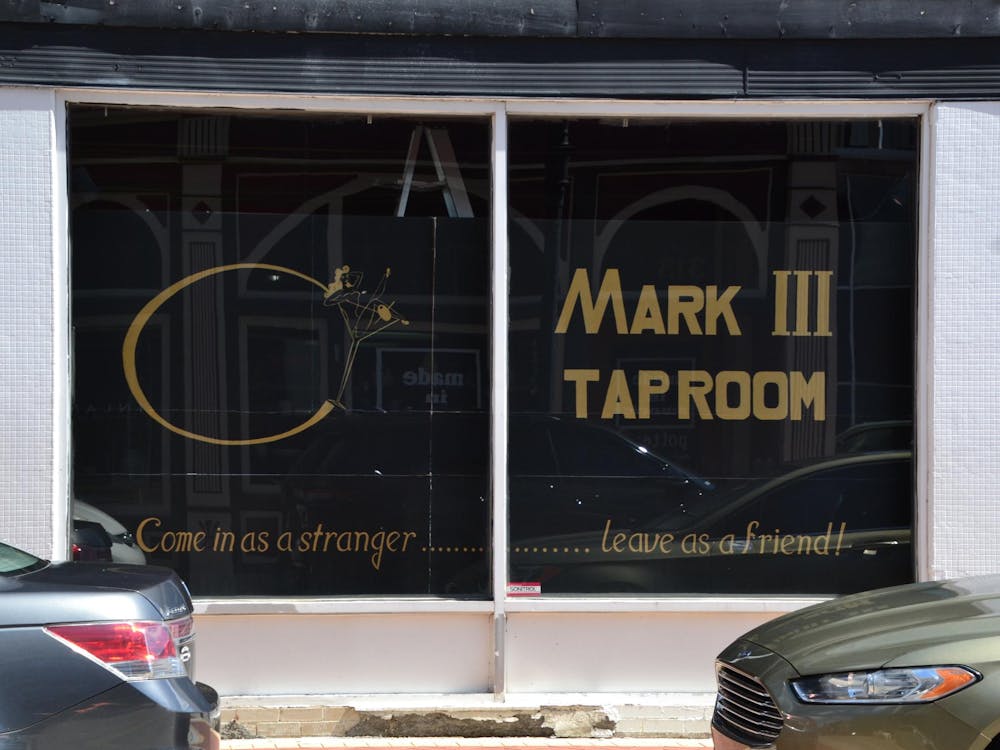A swirling, full-length skirt and a midriff-baring top complete the costume that members of the Belly Dance Club wear for their performances.
Each semester, the club hosts an event to showcase what they’ve learned, participate in talent shows and perform at various locations on campus. Reactions that members receive because of their outfits, however, aren’t always what they expect.
“Our peers are more accepting of these things — these different things we have going on at Ball State,” said Bridget Hartman, a senior general studies major. “We still do, however, have these looks, like those up and down looks. We get a lot of disapproving looks and we have gotten comments about how what we wear is inappropriate.”
Hartman has been a member of the club for four years and is currently the president. While she’s heard negative comments about belly dancing, it has helped her to accept her body and herself.
Most of the negative comments about belly dancing Hartman hears come from family, she said.
The tops belly dancers wear can range from crop tops to embellished bras, depending on the style of belly dance.
“We don’t see it as inappropriate because a lot of dance teams show something,” Hartman said. “We just show our stomachs. We’ve been told pretty harsh things. We’ve been told we need to get some dignity.”
Last year after a performance on campus, a woman told the club there’s a fine line between belly dancing and stripping, she said.
When someone tells the club a negative comment, most members will confront the person and try to teach them about belly dancing.
“We assume they probably don’t know anything about it,” Hartman said. “On that particular occasion, we just told her we aren’t removing any clothes.”
Haley Crane, a sophomore, joined Belly Dance Club in the fall after attending the Activity Fair. Crane said most of the negative comments she has heard since joining the club are from people who are not familiar with belly dancing.
“I haven’t gotten negative feedback from close family members and people who actually know about the dance,” she said. “It’s kind of frustrating when people view it so overly sexualized when there’s so many dance styles that aren’t viewed that way, [like] club dancing.”
After joining the Belly Dance Club, Crane found out her grandmother used to belly dance in the 1960s.
“My grandmother was very excited,” she said. “She actually brought over her belly dance costume and showed [it to] me.”
Crane said she hopes to continue belly dancing after college.
“It can really help confidence issues,” she said. “There’s just so many positive things to belly dancing, and I wish people would look further into it rather than just taking it for the American face value of it.”
When members aren’t participating in a performance, they wear a cover-up to not take the attention away from members who are dancing.
Hartman said the people they make smile during performances make it all worth it.
“It’s not to show off,” she said. “It is to entertain, but it’s mainly because we want to share it with other people and show you can do it, too.”
The midriff is exposed in many belly dancing costumes to highlight movements and isolations.
“The main reason for that is to show what we’re doing,” Hartman said. “A lot of the moves will happen with your obliques.”
The club does acknowledge that some members may not be comfortable showing their stomachs. Alternative dress options include an Egyptian-style costume that has a sheer cover for the midriff. Some tops have beading or decorations that hang low to create a panel to cover the stomach.
“We’re constantly pushing that ‘you’re fine as you are,’” Hartman said. “No matter what you look like, not one of us will put you down or judge you.”
However, she has noticed that as members become more involved with the club, they start to become increasingly comfortable with showing more skin.
“The funny thing is that most of the girls come in and they’re wearing a full shirt and they’re like, ‘I’m never showing my belly,’” Hartman said. “And in a few weeks, they’re showing their belly and then the next thing you know, they’re buying a costume that shows off their belly.”
In the beginning, she said she had hesitated wearing midriff-baring costumes.
“Even I didn’t show my belly at first and then when I started to — that’s when you knew it was doing something good for you,” Hartman said. “You become really aware of who you are.”
Not all of the feedback the club gets is negative. One comment from a performance at the Atrium last month came to Hartman’s mind.
“Nobody has ever said this,” she said. “A professor came up to us and said, ‘You guys are so courageous to be doing this.’ And it hit me — it really does take courage.”




